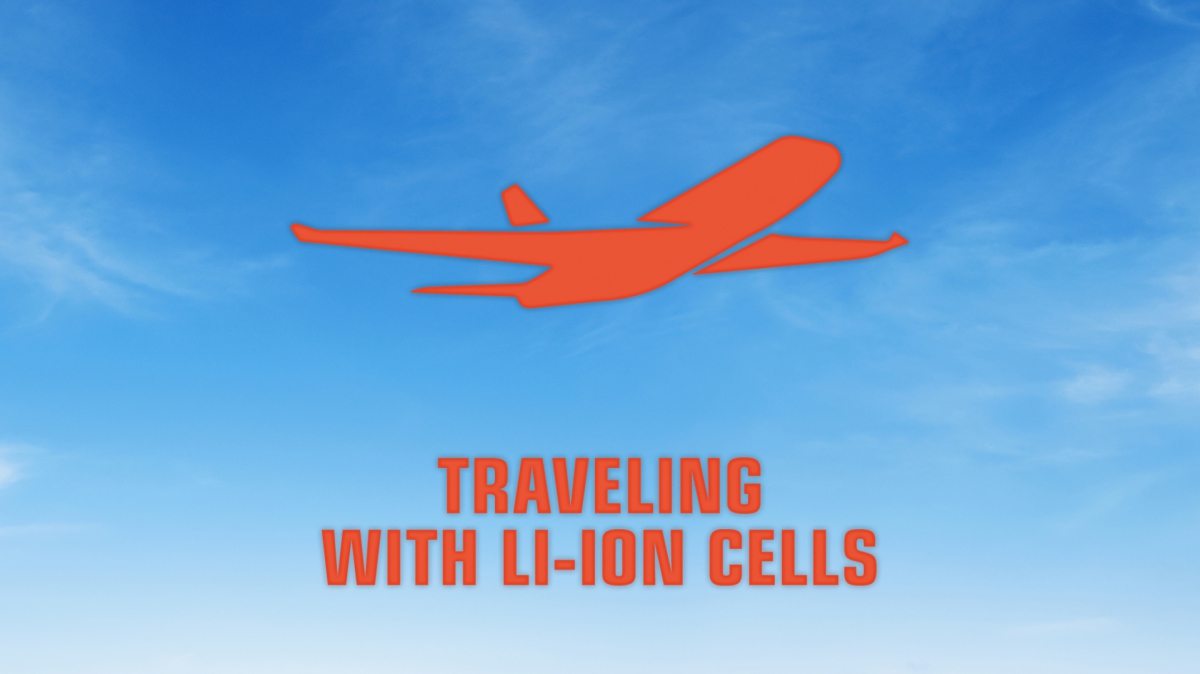Lithium-ion (Li-ion) batteries in air transport.
Lithium-ion (Li-ion) batteries in air transport.
In February 2019, IATA published the most recent update on the recommendations for the transport of dangerous goods – DGR (Dangerous Goods Regulations). These include lithium-ion batteries.
The new guidelines have drastically reduced the possibility to transport medium- and high-capacity lithium-ion packs widely used in diving equipment. It is also important to have in mind that each carrying airline (operator) may apply their own regulations and they have the final say regarding the approval to transport an item.
Some basic information in accordance with the IATA guidelines: (https://www.iata.org/contentassets/6fea26dd84d24b26a7a1fd5788561d6e/passenger-lithium-battery.pdf)
Passengers can bring on board lithium-ion batteries in an electronic device or as spare batteries:
- Up to 100Wh or up to two grams of Lithium content – the operator's approval is not required.
- a maximum of 15 devices containing batteries (up to 100) in checked baggage or in carry-on baggage,
- a maximum of 2 spare batteries over 100 Wh but not more than 160 Wh, in carry-on baggage only,
- up to 20 spare batteries (up to 100 Wh) in carry-on baggage only,
- above these amounts – only with the operator’s approval.
- Between 100Wh and 160Wh – with the operator’s approval.
- in electronic devices, in carry-on or checked baggage,
- spare batteries – a maximum of two – only in carry-on baggage and only with the operator’s approval.
- Above 160Wh – only as declared, registered transport of DGR in accordance with specific regulations (generally, it comes down to sending the equipment with separate transport, in appropriate packaging; it is undertaken by companies that specialize in DGR transport).
Moreover, IATA makes it clear how to transport spare batteries: they should be packed in a way that does not pose a risk of an electrical short circuit – whether in their original packaging or otherwise secured, so that the batteries do not come into contact with each other and have no exposed electrical contacts. Items containing lithium-ion packs whose purpose is to power other devices (for example, power banks, power supplies for lighting and diving heaters) are treated as spare batteries - they can only be carried in carry-on baggage.
All batteries should meet the safety requirements for carriage in accordance with the "UN Manual of Tests and Criteria" part III, subchapter 38.3.
Simply put, batteries should be certified to have passed the UN Tests. The Ammonite System batteries (battery packs 24, 14 and 10) are certified as such.
These types of tests include simulating various abrupt changes during transport, such as changes in pressure, temperature, crushing, or impact. In addition, the batteries are checked for any danger in the event of overcharging or sudden, deep battery discharge. Any manufacturer or supplier of such batteries should provide a copy of the UN Tests of the offered packs.
So how can a diver prepare for a flight when their diving set is powered by these packs?
The first instinct would be to buy power packs that are not based on lithium-ion cells. Until recently, virtually every manufacturer offered sets based on nickel and cadmium (NiCd) or nickel-metal hydride (NiMh), but unfortunately, neither technology is known for its good capacity and durability parameters: they self-discharge and have a limited service life.
Unfortunately, lithium-ion packs, despite having huge advantages: high capacity in relation to size, no memory effect (the battery can be charged at any time, even if it is not completely worn out), no self-discharge phenomenon, they also have their downsides: under the influence of high temperatures or other external factors, they may catch fire. Airlines, aware of the growing popularity of these types of packs used in everyday devices, keep raising the safety bar even higher. Until recently, we were able to transport Accu Type 14 packs without major problems.
The second option is to equip yourself with cells that meet the “up to 100Wh” requirements. Ammonite System offers such a pack – it is Accu Type 9 with its total energy lower than the 100 Wh limit set for air transport. In the case of this battery, it is exactly 96Wh.
Remember that in Ammonite System sets you can easily disconnect the power supply from the set and replace the battery pack with a charged one. So, nothing prevents you from equipping yourself with several packs in case you need larger amounts of energy.
The third option: in the case of packs up to 160Wh, you can call the hotline in advance or contact the operator by e-mail and ask for their approval to transport a larger pack. Generally, most operators do not have a problem with transporting 100-160Wh sets, but we cannot guarantee anything. The final decision is made by an airline staff member or a person working in airport security.
To be on the safe side, always bring a copy of your battery’s UN Test certificate with you when you travel. All current UN Test certificates are available to download on our website: www.ammonitesystem.com.
Remember, if the airport security worker is unsure about the parameters of the pack enclosed in the Ammonite System battery casing, you can access it easily by unscrewing the top or bottom battery cover and removing the battery pack. On the pack, there is a sticker with basic technical parameters.

